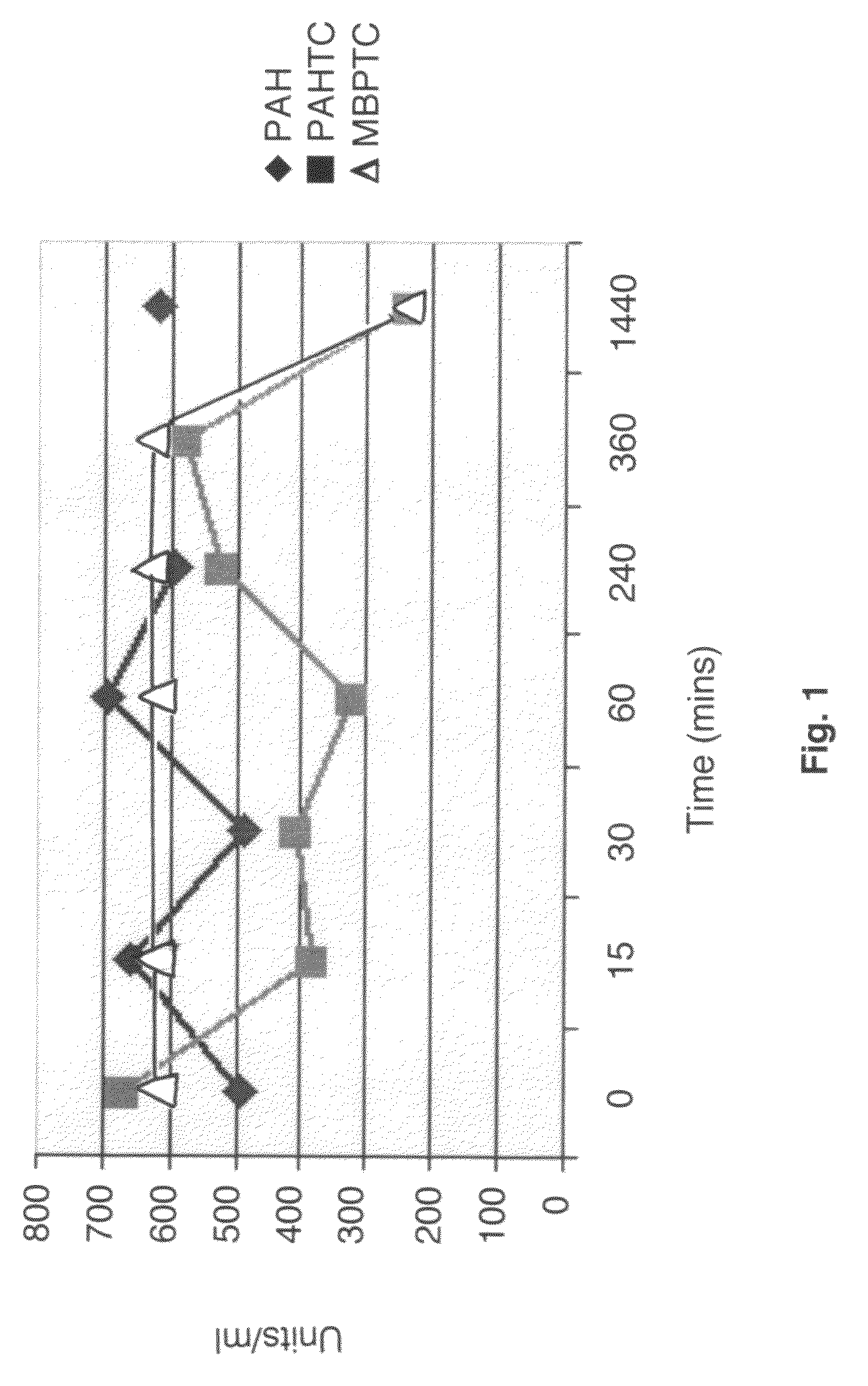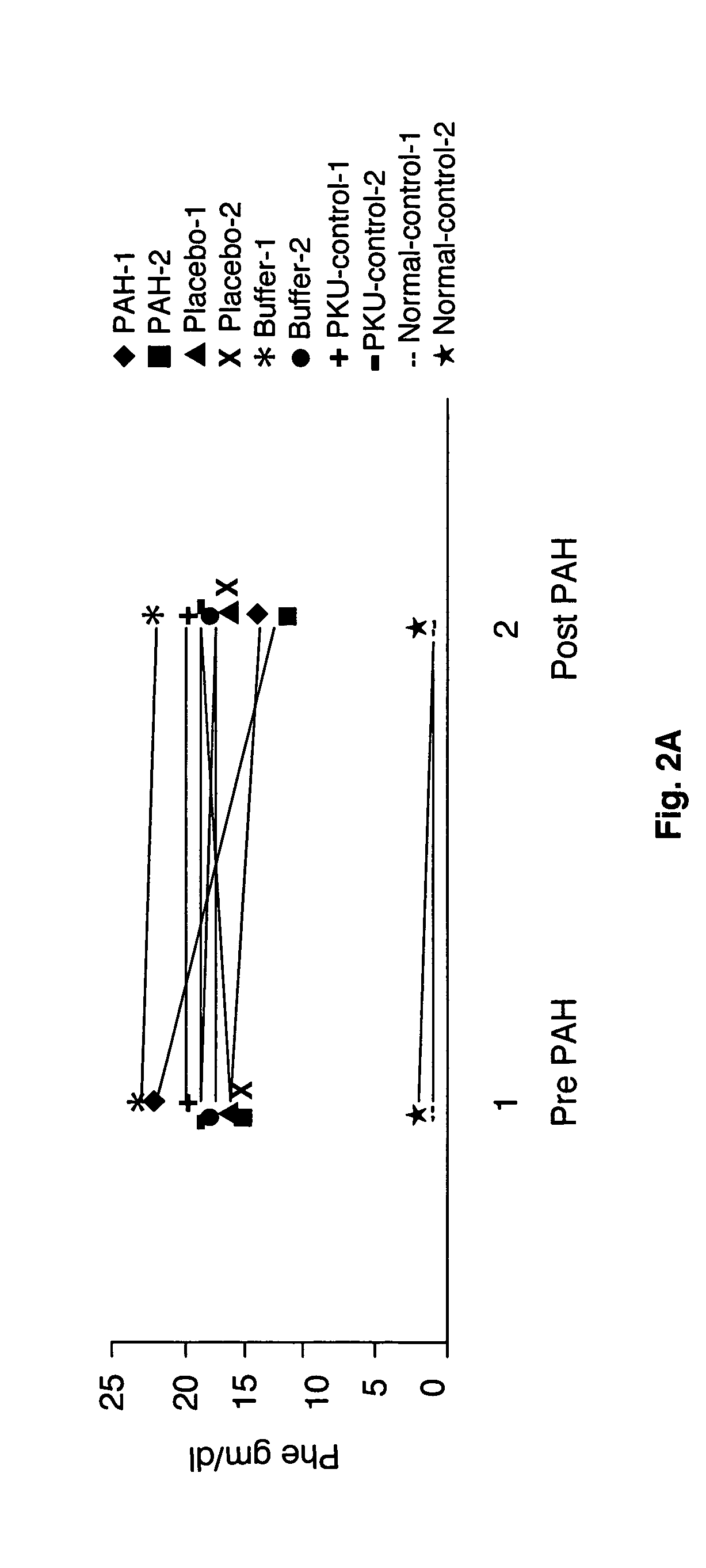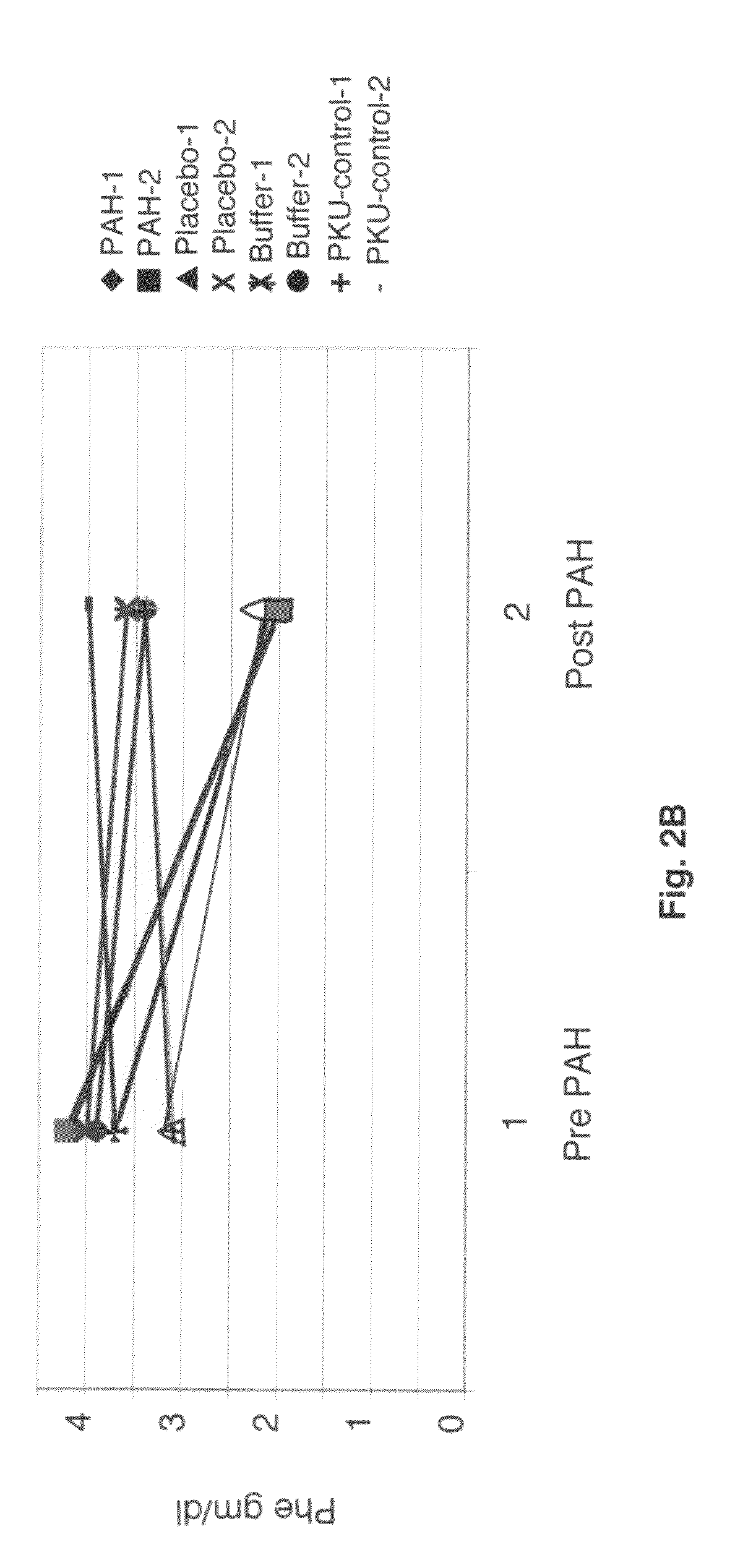Methods and compositions for treating phenylketonuria
a phenylalanine and composition technology, applied in the direction of lyases, carbon-nitrogen lyases, metabolism disorders, etc., can solve the problems of loss of intelligence and white matter in the brain, difficulty in attaining, and increased plasma phenylalanine levels
- Summary
- Abstract
- Description
- Claims
- Application Information
AI Technical Summary
Benefits of technology
Problems solved by technology
Method used
Image
Examples
example 1
Thiophosphorylation of PAH
[0057]The reaction requires protein (10.4 mg / ml), buffer (15 mM Na-HEPES, pH 7.0, 3 mM dithiothreitol, 0.03 mM EDTA), 500 nM ATP gamma S (prepare 2 mM=2.18 mg in 2 ml buffer). 500 mM ATP, SDS Page or urea gel, and 200 nM protein kinase A (Upstate Biotechnology).
Protocol
[0058]Wild-type human phenylalanine hydroxylase (wt-hPAH) in 15 mM Na-HEPES, pH 7.0, 3 mM dithiothreitol, 0.03 mM EDTA, 0.1 mM EGTA, and 10 mM magnesium acetate is prepared. 200 nM of PKA subunit catalytic subunit is added. Initiate the reaction by adding 500 nM of ATPgamma-S and incubate at 30° C. for 2-4 mins. A parallel reaction is run as above except that the reaction is initiated by adding 500 nM of ATP. The protein is concentrated by passing through YM10. Both a standard protein assay and a standard enzyme assay are performed.
example 2
Recombinant PAH (dt-hPAH) Expression and Purification:Expression of dt-hPAH
[0059]2 ml of LB medium containing 50 ug / ml of ampicillin is inoculated with the BL21 (DE3) for 2-3 hrs at 37° C. until the OD at A600 reaches 0.8. 1 ml of the cells is transferred into 12 L of LB medium containing 50 ug / ml of ampicillin. The cells are grown overnight at 37° C. The stock is maintained in 25% glycerol. Check that the OD at A600 is about 0.8. Add 0.5 mM IPTG for 2-3 hrs to the medium to induce expression. Spin the cells in a large centrifuge, 10,000 g for about 10 mins. After the cells form a pellet, pour out the supernatant and scrape out the cells into a plastic bag. Flatten them into a “pancake” and freeze them at 80° C.
[0060]The buffer is 10 mM Tris-HCl, pH 7.4, 200 mM NaCl, 1 mM EDTA, and 0.2 mM PMSF. Resuspend the pellet in the 300 ml lysis buffer. Sonicate for 20-30 minutes. Set at 70% and sonicate for 1 sec on and 3 secs off for a sonication time of 3 minutes with a total time...
example 3
Phenylalanine Hydroxylase Digestion
[0064]In a basic environment, pH 8.5, of the GI tract, a mammalian phenylalanine 4-hydroxylase enzyme (human or mouse) expressed recombinantly in E. Coli is stable for up to 24 hours at pH 8.5. The recombinant enzyme can be full length or truncated. When the hydrolytic enzymes trypsin and chymotrypsin are added to the recombinant phenylalanine 4-hydroxylase or its conjugates in a test tube at pH 8.5, the enzyme half-life is 6 hours.
[0065]This result indicates that, if the recombinant phenylalanine 4-hydroxylase enzyme is taken in an enteric coated formulation, it will be sufficiently stable to convert phenylalanine to tyrosine in the GI tract, before the phenylalanine can be absorbed into the bloodstream. This will lower the Phe levels in the blood, constituting a treatment for PKU. Table 1 compares the activity of phenylalanine 4-hydroxylase in the presence of trypsin and chymotrypsin with that of phenylalanine 4-hydroxylase alone.
[0066]
TABLE 1tim...
PUM
| Property | Measurement | Unit |
|---|---|---|
| thickness | aaaaa | aaaaa |
| thickness | aaaaa | aaaaa |
| molecular weight | aaaaa | aaaaa |
Abstract
Description
Claims
Application Information
 Login to View More
Login to View More - R&D
- Intellectual Property
- Life Sciences
- Materials
- Tech Scout
- Unparalleled Data Quality
- Higher Quality Content
- 60% Fewer Hallucinations
Browse by: Latest US Patents, China's latest patents, Technical Efficacy Thesaurus, Application Domain, Technology Topic, Popular Technical Reports.
© 2025 PatSnap. All rights reserved.Legal|Privacy policy|Modern Slavery Act Transparency Statement|Sitemap|About US| Contact US: help@patsnap.com



